#rutherglen & hamilton west
Text
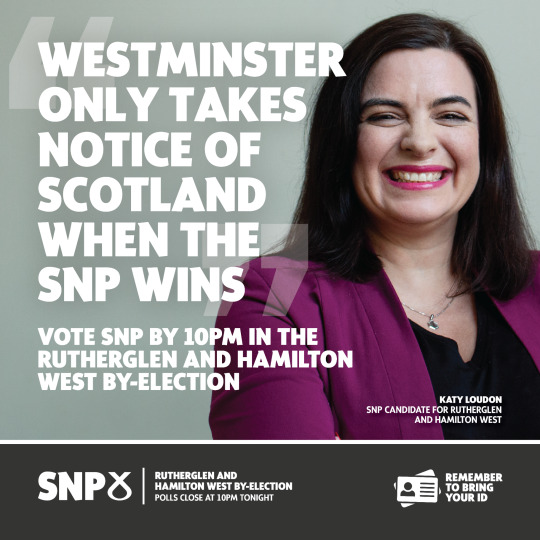
#rutherglen & hamilton west#westminster by-election#katy loudon#snp#westminster#uk politics#scottish politics#vote#voter id#scotland#scottish independence
7 notes
·
View notes
Text
In the UK, the Labour Party just flipped a seat in a by-election. Labour and the Liberal Democrats have been doing this quite a bit recently.
This time it was in Scotland in the constituency of Rutherglen and Hamilton West. Labour support skyrocketed over results in the last general election. The seat had previously been held by a member of the scandal-plagued Scottish National Party (SNP) which has 44 seats in Parliament.
Labour has defeated the SNP to win the Rutherglen and Hamilton West by-election.
The party's candidate, Michael Shanks, took the Westminster seat with 17,845 votes - more than double the number polled by the SNP's Katy Loudon.
The result was a swing of 20.4% from the SNP to Labour.
The by-election was called after former SNP MP Margaret Ferrier was ousted by her constituents for breaking Covid rules.
Labour leader Sir Keir Starmer said it was a "seismic" night and that people in Rutherglen and Hamilton West had sent "a clear message".
This was the second-best result for Labour in this constituency since the second Margaret Thatcher win.

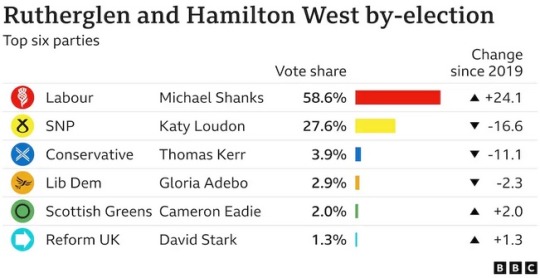
The ruling Conservative Party saw its support drop by 11.1 points in Rutherglen and Hamilton West. It's their latest disappointment in the unusual number of by-elections which have taken place since the 2019 general election.
But the worst may be yet to come for the Conservatives.
I was looking at a YouGov/The Times poll taken in the UK in early October and noticed something astonishing. Only 2% of those polled in the 18 to 24 age group said they would vote Conservative. Even when poll results are weighted by likelihood of voting, that number creeps up to just 4%.
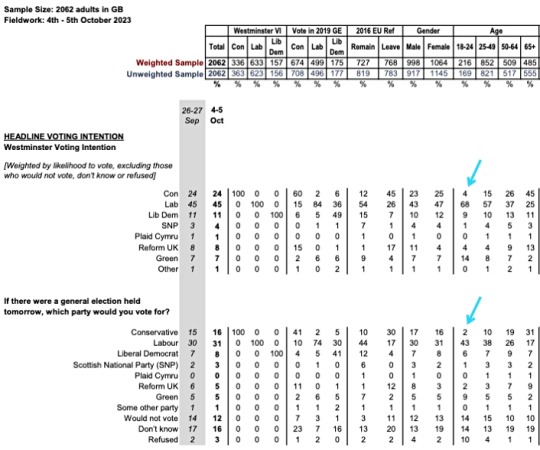
If that's too small to see, check out the PDF for full poll results.
I don't regard polls as infallible, but this looks downright miserable for the future of the party of Brexit.
The slightly less poor Conservative standing with the 25 to 49 group (10% raw, 15% weighted) shows that the longtime trend of voters becoming more conservative as they age is not as strong as it might have been in the past.
The next general election must be held no later than 28 January 2025. Though it would probably be held sometime between May and December of 2024. Of the 21 general elections since 1945, 15 have taken place in May, June, or October.
#uk#scotland#by-election#rutherglen and hamilton west#parliament#house of commons#labour party#snp#lib dems#conservative party#michael shanks#tory support plummets with young people#uk general election
4 notes
·
View notes
Text
From teacher to ‘Emperor of India’ – a look at all the candidates for the Rutherglen and Hamilton West by-election | In Trend Today
From teacher to ‘Emperor of India’ – a look at all the candidates for the Rutherglen and Hamilton West by-election
Read Full Text
or
Full Article on MAG NEWS

View On WordPress
#Celebrities#From teacher to ‘Emperor of India’ – a look at all the candidates for the Rutherglen and Hamilton West by-election#Money#Motors#Politics#ShowBiz#Sport#Tech#UK#US#World
0 notes
Text
Humiliation!
The SNP's defeat in the Rutherglen and West Hamilton by-election was not unexpected. Recalling the behaviour of the party's upper echelons over the past months and years the impression gained is that they were intent on losing. What is shocking - even to
This is not a victory for British Labour in Scotland. It is a trouncing for the SNP. This is the kind of humiliating defeat that should give the SNP leadership pause for thought. It is the kind of electoral kicking that should have the SNP membership up in arms and calling for the heads of those responsible. It should be a salutary lesson and a transformative experience.
Ah hae ma…
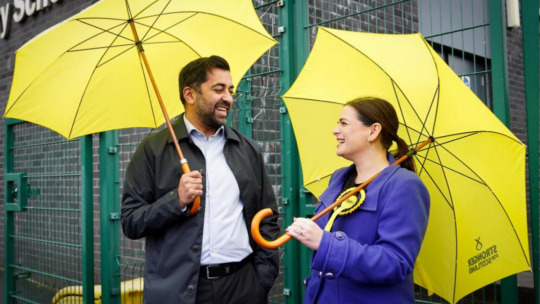
View On WordPress
0 notes
Text
Humiliation!
The SNP's defeat in the Rutherglen and West Hamilton by-election was not unexpected. Recalling the behaviour of the party's upper echelons over the past months and years the impression gained is that they were intent on losing. What is shocking - even to
This is not a victory for British Labour in Scotland. It is a trouncing for the SNP. This is the kind of humiliating defeat that should give the SNP leadership pause for thought. It is the kind of electoral kicking that should have the SNP membership up in arms and calling for the heads of those responsible. It should be a salutary lesson and a transformative experience.
Ah hae ma…

View On WordPress
0 notes
Text
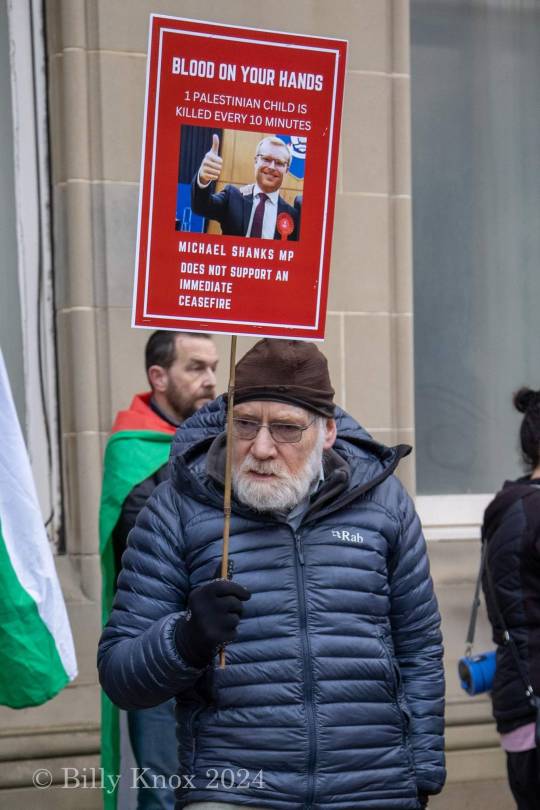
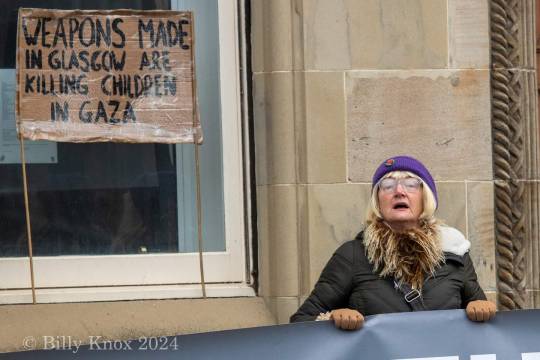

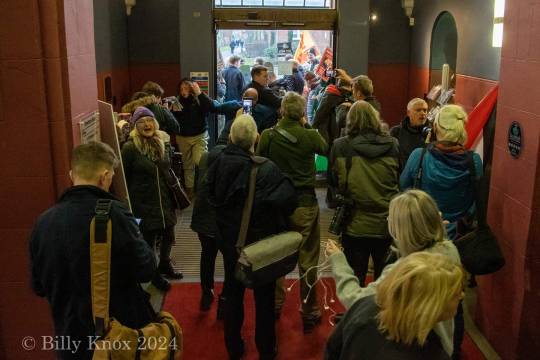
Well done to the pro-ceasefire campaigners who gathered in #Rutherglen ahead of a speech by #AnasSarwar, expressing anger over MP #MichaelShanks's position on #Gaza.
-- Agnes Campbell, 8 Jan 2024
Organizers in Rutherglen, Scotland called for a protest against Michael Shanks, Member of Parliament for Rutherglen and Hamilton West, for "his complicity in the Gaza genocide."
8 notes
·
View notes
Text



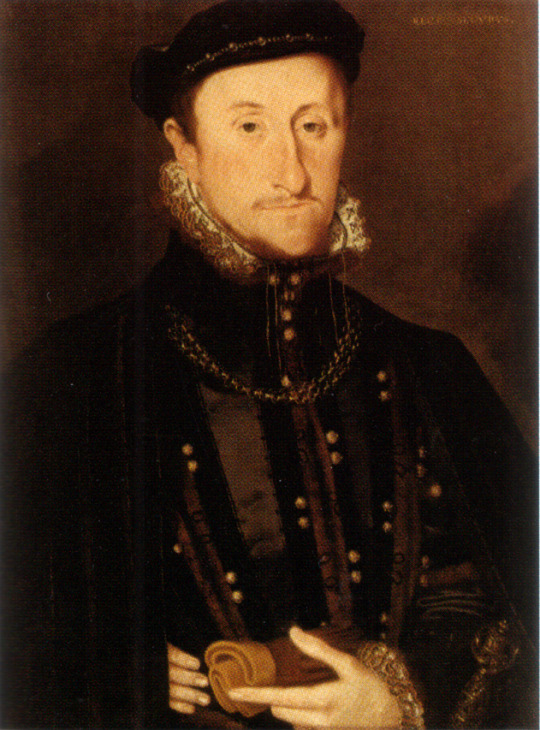

On January 23rd 1570 James Stewart, the Regent Moray on the abdication of Mary Queen of Scots, was murdered in Linlithgow.
The assassination by James Hamilton of Bothwellhaugh was the first known assassination with a firearm, obviously other deaths by firearm will have happened, but the term means a high profile killing, like that of a political figure, like Moray.
James Stewart, the 1st Earl of Moray,, known mainly as just Moray, partly caused the downfall of Mary Queen of Scots, his own half-sister. Historians like to portray her as a tragic heroine and Moray has long been seen as the villain of the piece.
Religion, politics and sheer hatred were the prime causes of his assassination for the perpetrator was a Roman Catholic, James Hamilton of Bothwellhaugh, whose family were staunch supporters of Mary and had personal grudges against the Regent.
Born in 1531, Moray was the illegitimate son of King James V and his mistress, Lady Margaret Erskine. James wanted Margaret to be his Queen Consort and he unsuccessfully petitioned the Pope that she could get a divorce from her husband so he could marry her and thus legitimise young James, who would then have become King James VI with Mary, Queen of Scots, nowhere near the throne.
Raised a Catholic, it is not known exactly when Moray converted to Protestantism, and it may have been through a meeting with John Knox, but it did not stop him acting as a commissioner in the negotiations for the marriage of his half-sister Mary to the Dauphin of France on behalf of the queen’s regent and mother, Mary of Guise.
With the other Protestant Lords of the Congregation he turned against Mary of Guise, though when Queen Mary’s husband King Francis II died, it was Moray who went to France to fetch Mary home to reign over Scotland.
As a close adviser to Mary, who had declared freedom of religion, he dealt firmly with both John Knox who wanted Mary to be banned from attending Mass, and the Catholic rebel George Gordon, Earl of Huntly, who he defeated at the Battle of Corrichie in October, 1562.
In reward, Mary made James both Earl of Mar, briefly, and Earl of Moray, the latter a revived title. By 1565 they had fallen out, however, over Mary’s choice of the Catholic Henry, Lord Darnley, as her consort.
Moray broke out in open rebellion against the Queen and there followed the so-called Chaseabout Raid with a series of close encounters that ended with Moray fleeing to England where he had to explain himself to Queen Elizabeth.
Moray spent time forging links with the English authorities and was absent from Scotland when both David Rizzio and Darnley were murdered, so he could not be blamed for either.
Moray left the country again when James Hepburn, the 4th Earl of Bothwell, married Mary and tried to take charge of the country with the support of the powerful Hamilton family.
The Lords of the Congregation began an open civil war against Mary and after the bloodless Battle of Carberry, Mary was forced by them to abdicate and was imprisoned in Loch Leven Castle in July, 1567. Moray returned to Scotland the following month and was made Regent for the infant James VI.
After Mary’s dramatic escape from Loch Leven, at the Battle of Langside near Glasgow on May 13, 1568, Moray’s stronger forces soundly defeated Mary’s supporters, led by the Hamiltons, causing her to flee to England.
Moray already had some enmity with the Hamiltons who continued to resist his rule. After a year of suppressing support for Mary in the south and west of Scotland, he razed the Hamilton stronghold, Rutherglen Castle. By the end of 1569 he had managed to bring all parts of the country into an uneasy peace – a formidable achievement. Only Dumbarton Castle held out for Mary. He was on his way to arrange its recapture when he passed through Linlithgow on this fateful day in 1570.
James Hamilton of Bothwellhaugh had a personal grudge against Moray who had evicted his family from their homes. He lay in wait behind the window of his uncle Archbishop John Hamilton’s house on the high street of the town, and as Moray passed on horseback, the assassin struck.
There is a contemporary account of the event in the diary of Robert Birrel, a burgess of Edinburgh , who chronicled all the diverse happenings of most of the decades of the 16th century, writing;
“The Earl of Moray, the Good Regent, was slain in Linlithgow by James Hamilton of Bothwell-haugh, who shot the said Regent with a gun out at ane window, and presently thereafter fled out at the back, and leapt on a very good horse, which the Hamiltons had ready waiting for him; and, being followed speedily, after that spur and wand had failed him, he drew forth his dagger, and struck his horse behind; whilk causit the horse to leap a very broad stank; by whilk means he escaped.”
Moray had been shot below the navel, and though he walked away, his death later than night was inevitable. He was just 38.
Hamilton escaped to France and was never captured, but members of his family, including Archbishop Hamilton, were arrested and executed for their alleged part in the murder.
Moray was buried in St Giles Cathedral, with John Knox preaching at his funeral. As seen in the pics there is a stained glass window in the cathedral which tells the story of the assassination and which depicts Knox preaching – ironic, since Knox always railed against such "Papist decor."
The Earl left a poisoned legacy, namely the so-called Casket Letters which were used against their alleged author Mary, Queen of Scots, in the proceedings that ultimately led to her execution in 1587. It was Moray who acquired those letters and showed them to the English nobility.
Other pics are a later depiction of the scene and a photo of the rifle used in the assassination.
For that alone, he is often reviled by the fans of Mary.
13 notes
·
View notes
Text
Labour in Scotland - turning point or breathing space?
(First published on LabourList 23rd October 2023)
Labour’s stunning victory in the Rutherglen and Hamilton West by-election opens the door to many more Scottish Labour MPs.
Recent polling shows voters in Scotland prioritise getting rid of the UK Conservatives over choosing a unionist or independence MP. Tactical voting might bring further gains.
A major Labour recovery would, however, confront the party with a huge judgement call. Is this a turning point? Or is it a breathing space? Is it a return to ‘politics as usual’ in which the constitutional question is marginal, or is it a window of opportunity to re-think a better union?
Labour should not be complacent even if it wins big
An extraordinary series of events propelled the SNP forwards: dissatisfaction with Labour in Westminster and Holyrood, mass mobilisation during the Indy referendum that consolidated SNP leadership, the divergence from the UK government over Brexit, and dislike of the Tories. SNP momentum might well have stalled even if the leadership had not imploded.
If, though, we want a stable and popular union we should not be complacent. Support for independence remains at 47%. Former Ed Miliband advisor Ayesha Hazarika has warned: “Starmer will need to show the people of Scotland that a Labour government can deliver for (Indy supporters) and fast before the Holyrood elections in 2026. Those Scottish elections could well place the future of the union centre stage again.”
A new report by the think tank IPPR suggests that a stable union will need change in every nation, including making a shaper distinction between the governments of England and of the UK.
The idea of the union is by no means dead. Support for the principle of social and economic solidarity across the UK is strong, (even if voters are rather less keen to share their national tax revenues). Nor is there support for wide policy variation (which does not mean voters don’t want devolution). Other studies suggest Scottish voters want more than a simple choice between unionism or independence.
On the other hand, many voters feel their nation receives less than its fair share.
Voters think other nations get too much
Scotland tends to complain it gets too little while England thinks Scotland gets too much. Authors Ailsa Henderson and Richard Wyn Jones characterise this as a ‘union of grievance’. More than half of voters in each UK nation support either independence or are ‘union ambivalent’, meaning that support is qualified by other considerations.
Wales has the most voters who back the continued British union. Scotland has most independence supporters and fewest ‘union ambivalent’, England the least independence and the most ambivalent. English Leave voters were prepared to see the UK breakup to ‘get Brexit done’; but many English Remain voters thought that ‘losing faith in the union’ would be worth it to remain in the EU.
Most voters in England, Scotland and Wales favour Irish re-unification – far more than in Northern Ireland itself.
Only a small minority of voters see Britain as a single state with a single government. Support for ‘muscular unionism’ – asserting the union over its nations – a term associated with May and Johnson but first used to describe Scottish Labour policy, is limited in every nation and the very idea divides supporters of both the Labour and Conservative parties.
Crucially ‘there is no single British national identity with a shared understanding of the union…but….multiple versions of Britishness across the state, each associated with different and at times contradictory visions of the state’. The ‘British’ in England were generally Remainers, but being British in Scotland and Wales meant the opposite.
Those who prioritise their Irish, Scottish and Welsh identities are notably more pro-autonomy and pro-European than their devo-anxious and Eurosceptic English counterparts. The union simply cannot be held together by asserting the importance of a shared British identity or the power of the UK state.
Labour must advocate in each nation for each nation
Studies of Welsh and Scottish elections suggest Labour success in Wales and SNP dominance in Scotland rested on each party’s ability to present itself as best for the national interest.
In England the Conservatives mobilised English identifying voters over 20 years. In each British nation, Labour must be the best advocate for the nation within the solidarity of union, not just an advocate for the union.
The restiveness of Scottish voters will re-merge unless Labour can refashion both a devolution settlement and a new relationship with the UK government that really delivers for Scotland. Welsh Labour that has long advocated a ‘union of nations.’ In England the debate has not yet begun.
Labour’s new England membership card, which has no space for a St George Cross, symbolises a party that rarely speaks to England and does not distinguish Britain from England in politics or in governance. This very Anglo-centric British unionist outlook is a problem for the union and for England.
The IPPR report highlights ‘the tendency of the present UK Government (and those seeking to form the next one) to announce policy initiatives for ‘this country’, an entity whose borders are only very rarely specified’. How, it asks, ‘can the UK government avoid being regarded as an English government asserting its will over territory on which it currently does not enjoy a political mandate?’
Building a popular stable union means enabling Scottish Labour to stake its claim as best party for Scotland as well as supporting the union. Welsh Labour should continue doing the same. But both rely on Labour also having the courage to be the best party for England and not just for the union.
Turning point or breathing space? There may not be long to decide.

John Denham
0 notes
Text
'It's not good news obviously, I don't think people were prepared for the extent of the defeat!'
'It's not good news obviously, I don't think people were prepared for the extent of the defeat!'
Former SNP Member, Stuart Crawford, reacts to Labour's victory over the SNP in the Rutherglen and Hamilton West by-election.
🖥 GB News on YouTube https://t.co/Wa58gYGZwF pic.twitter.com/ihmyfp6Ozc
— GB News (@GBNEWS) October 6, 2023
Lt Col Stuart Crawford is a defence analyst and former army…

View On WordPress
0 notes
Text
From teacher to ‘Emperor of India’ – a look at all the candidates for the Rutherglen and Hamilton West by-election
From teacher to ‘Emperor of India’ – a look at all the candidates for the Rutherglen and Hamilton West by-election
Read Full Text

View On WordPress
0 notes
Text
Scotland: Rutherglen and Hamilton West The reality behind Labour’s by-election euphoria
Scotland: Rutherglen and Hamilton West The reality behind Labour’s by-election euphoria

The Rutherglen and Hamilton West by-election was a massive vote of no confidence in the main pro-capitalist parties. Despite intense attention from the media and the political establishment, and major resources expended by Labour and […]
0 notes
Link
Labour secured more than double the votes of the SNP in Rutherglen and Hamilton West last week.
0 notes
Text
From teacher to ‘Emperor of India’ – a look at all the candidates for the Rutherglen and Hamilton West by-election | In Trend Today
From teacher to ‘Emperor of India’ – a look at all the candidates for the Rutherglen and Hamilton West by-election
Read Full Text
or
Full Article on MAG NEWS

View On WordPress
#Celebrities#From teacher to ‘Emperor of India’ – a look at all the candidates for the Rutherglen and Hamilton West by-election#Money#Motors#Politics#ShowBiz#Sport#Tech#UK#US#World
0 notes
Text
Spoiling for a fight?
The rather impressive building pictured above is Rutherglen Town Hall, where I’ll be later today. Not campaigning for any of the candidates, of course. In the Rutherglen and Hamilton West by-election, it’s not so much a case of which party I would like to see win as which I most want to see lose. In the past, this list would have been limited to the British parties and fringe loonies standing on…

View On WordPress
0 notes
Text
Spoiling for a fight?
The rather impressive building pictured above is Rutherglen Town Hall, where I’ll be later today. Not campaigning for any of the candidates, of course. In the Rutherglen and Hamilton West by-election, it’s not so much a case of which party I would like to see win as which I most want to see lose. In the past, this list would have been limited to the British parties and fringe loonies standing on…

View On WordPress
0 notes
Text
Rutherglen and Hamilton West: Voters go to polls in by-election
Image source, PA Media
Surveys have actually closed in the Rutherglen and Hamilton West by-election.
Scotland’s very first recall by-election was activated after constituents voted to oust previous SNP MP Margaret Ferrier, who breached Covid guidelines.
Both Labour and the SNP are considering success to land an early blow ahead of the next basic election, which is anticipated to be kept in…

View On WordPress
0 notes